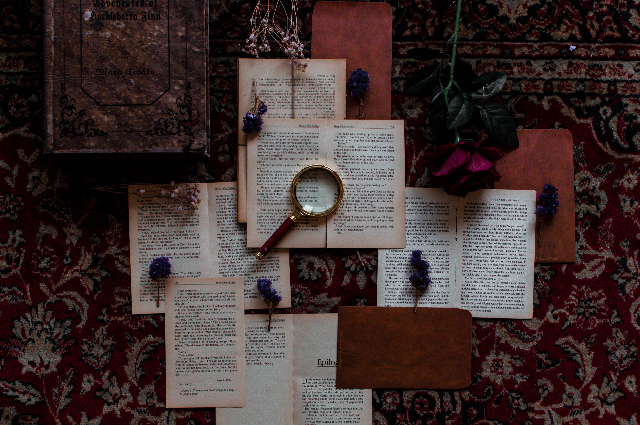
Source: Loverna Journey on Unsplash
Art is a mirror which reflects the entire history of the world. Every art forms have their own stories and background which really reflects the culture and practice of the society. The doors of arts are always open to diversities and variegations of people and their Heritage. All art forms in the world are connected directly to the rich traditions and Customs. Art is a global Pursuit which is not only confined to music, drama, or poetry but it is a large manoeuvre which includes fine arts, liberal arts, visual arts, performing arts, applied arts, etc. Many art forms are sources of untold legacies and values.
Mappila pattu Or Mappila song is a popular genre in poetry. The word Mappila denotes Muslims. This is a Folklore Muslim song which is closely linked to the cultural practices of Kerala. Mappila pattu is a lyrical song in Arabi-Malayalam by Mappilas of the Malabar region in Kerala, India. The song is compiled with a rich variety of customs and traditions of Kerala. Arabi-Malayalam is a language which takes words from both Arabic and Malayalam. Apart from these two languages they use Persian, Hindustani, and Tamil words in the song. The captivating rhythm and fabulous tunes are the highlighting factors of this poetry genre. The grammatical structure is based upon the Malayalam language itself. The style of Mappila songs happened parallel to the Manipravalam tradition in Malayalam poetry, which is the mixing up of Sanskrit and Malayalam languages.
History and Different Genres of Mappila pattu:
The history of Mappila pattu goes back seven centuries and the first noted work is Muhyudheen Mala written by Qadi Muhammad in 1607 AD. Muhyudheen Mala is one of the most celebrated works among Muslims. It is the praise of great Sufi saint Khaja Muhyudheen. Over the centuries, different types of Mappila pattu were composed in accordance with the religious and political environment of the Mappilas of Malabar. Mainly the themes are related to devotional thoughts and later in the Colonial period it changed the track and moved to battle songs called Padappattu. Padappattu is very popular and it has a wide range of acceptance among art lovers due to its uniqueness. It is a song with a fine rhythm and also it is sung in a very fast tune. so this is really a kind of energy-boosting song among the people.
There are a lot of divisions in the Mappila pattu. They are Mala pattu, which is about the praise of pious characters, Khessukal are romantic ballads which really touch the emotions of the audience. Kissukal tells about the stories of prophets of Islam. Viruthangal is a kind of devotional song to god. Urudi is a fast and furious song which picture the war scenes and also there are marriage songs which are specifically for marriages and add colour to the marriage functions in Malabar.
Mala pattu is one of the renowned genre in Mappila pattu. It is written in Arabi- Malayalam script and it depicts the spiritual life of great Sufi saints in Islam. Most of the Malas portrait the supernatural deeds of these sufis. Each Mala often corresponded to the eminent leader of a Sufi order called Thareeqath. Muhyudheen mala,Rifa'e mala, Ajmer Mala and Nafeesath Mala are the well-known Malas in Malabar . Nafeesathul misriya was a famous lady Sufi lived in Egypt and this Mala is very common and seen as a powerful mantra among the women against the adversities in life.
Pioneers in Mappila pattu:
Moyin Kutti vaidyar is the Pioneer in Mappila pattu. He is known as the Mahakavi (great poet). He was born at Kondotty in Malappuram district in Kerala. His famous romantic epic is Badarul Muneer- Husnul Jamal. He later wrote different songs related to the famous battle in Islam called Badr. Badr Padappattu and Malappuram padappattu are most popular war songs. Badar padappattu deals with the story of the Battle of Badr by Prophet Muhammad and his companions. Malappuram padappattu pictures the peasant life and struggles in Malappuram in 18th and 19th centuries.
Pulikkottil Hyder is the another renowned figure in Mappilapattu. He was born in wandoor. He is known as the Kunjan Nambiar of Mappila pattu. He wrote about social evils and main topics of common interest. In his famous vellapokka Mala he describes about the heavy flood which devastated the entire Malabar, Mysore, and Travancore regions. The sufferings and horror pictures of flood is very beautifully and realistically portraited in his songs. The Other leading figures in the genre are chakeeri moyidin Kutty, Chettuvayi pareekutty, T.Ubaid, S.A Jameel etc. After 1920s the Mappila pattu genre witnessed the high influence of Malayalam. This was the period of theological reform movements and Nationalist mobilization in Malabar. Therefore the themes of about Mappila pattu change their focus and It moved to Pan Indian nationalism and Independence movement against the British. The famous 1921 Malabar rebellion also had a great influence on this genre.
Arts have a great impact on society and they also serve as a historical record of the surroundings of the people. Apart from mere enjoyment and recreation Mappila pattu abide as an authentic and bona fide documentation of the legacy and heritage of a community. In the present scenario, Mappila pattu had tremendous changes from the early seventies but its admissibility still remains the same or more than that. Nowadays recreated versions of old Mappila pattu are becoming viral among the people. It shows that people are still bonded with the delicacy and nostalgia of Mappila pattu. Each and every verses of all Mappila pattus are the perfect reflections of society and its tradition. And the arts won't ever die it will live with the society as an integral part of it.
